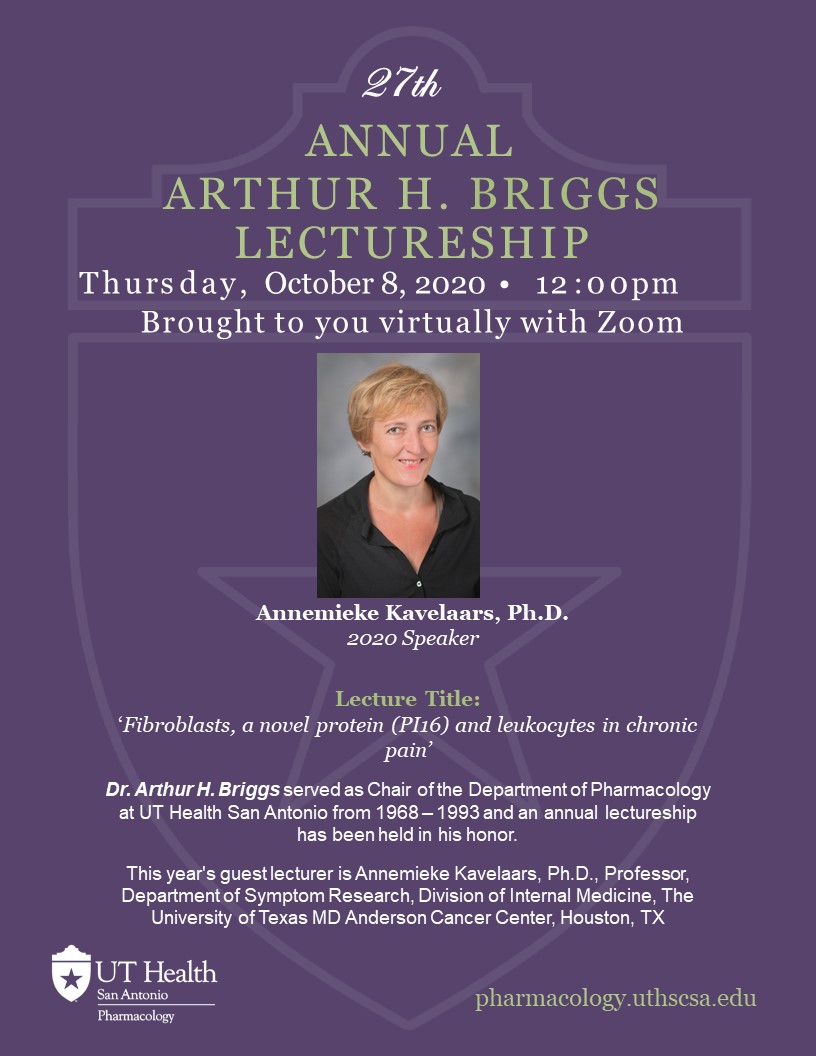Seminar – 27th Annual Arthur H. Briggs Lectureship
Event Date & Time
October 8, 2020 at 12 NoonLocation
Virtual ZoomEvent Details: 
About the Speaker(s)
About Dr. Kavelaars
Annemiek e Kavelaars is a researcher in the field of neuroimmunology. She began her work in the areas of brain, behavior and immunity as a graduate student. She has worked extensively with experimental animal models of pain and of acute and chronic inflammatory diseases, has used biochemical and cell biology techniques, and has performed multiple translational studies.
e Kavelaars is a researcher in the field of neuroimmunology. She began her work in the areas of brain, behavior and immunity as a graduate student. She has worked extensively with experimental animal models of pain and of acute and chronic inflammatory diseases, has used biochemical and cell biology techniques, and has performed multiple translational studies.
The main focus of Dr. Kavelaars' work in the pain field is on mechanisms underlying the transition from acute to chronic pain. She has worked extensively with various experimental animal models of pain in mice, including inflammatory and nerve damage models. Her lab was the first to identify a key role for the kinase GRK2 in regulating transition from acute to chronic pain. She showed that GRK2 in nociceptors prevents transition from acute to chronic pain by controlling the activity of the cAMP sensor Epac1. In addition, she investigated the role of monocytes and macrophages in the transition from acute to chronic pain. Using mice with cell-specific deletion of GRK2, she demonstrated that GRK2 in monocytes and macrophages is required to prevent chronic inflammatory pain. In cell transfer studies, she demonstrated that resolution of inflammatory pain depends on IL-10 production by monocytes and macrophages. More recently, she is using a combination of models of reflexive and spontaneous pain and also a novel test we developed to study numbness because this is frequently reported by patients treated for cancer.
Dr. Kavelaars has also begun working on chemotherapy-induced neuropathic pain. Her group is identifying novel targets for treatment and investigating the contribution of the immune system to recovery from pain. She uses behavioral measures to determine sensitivity to pain and its comorbidities, such as depression-like behavior, as well as cellular and molecular methods for analysis of the underlying mechanisms.
Contributing website:![]()
